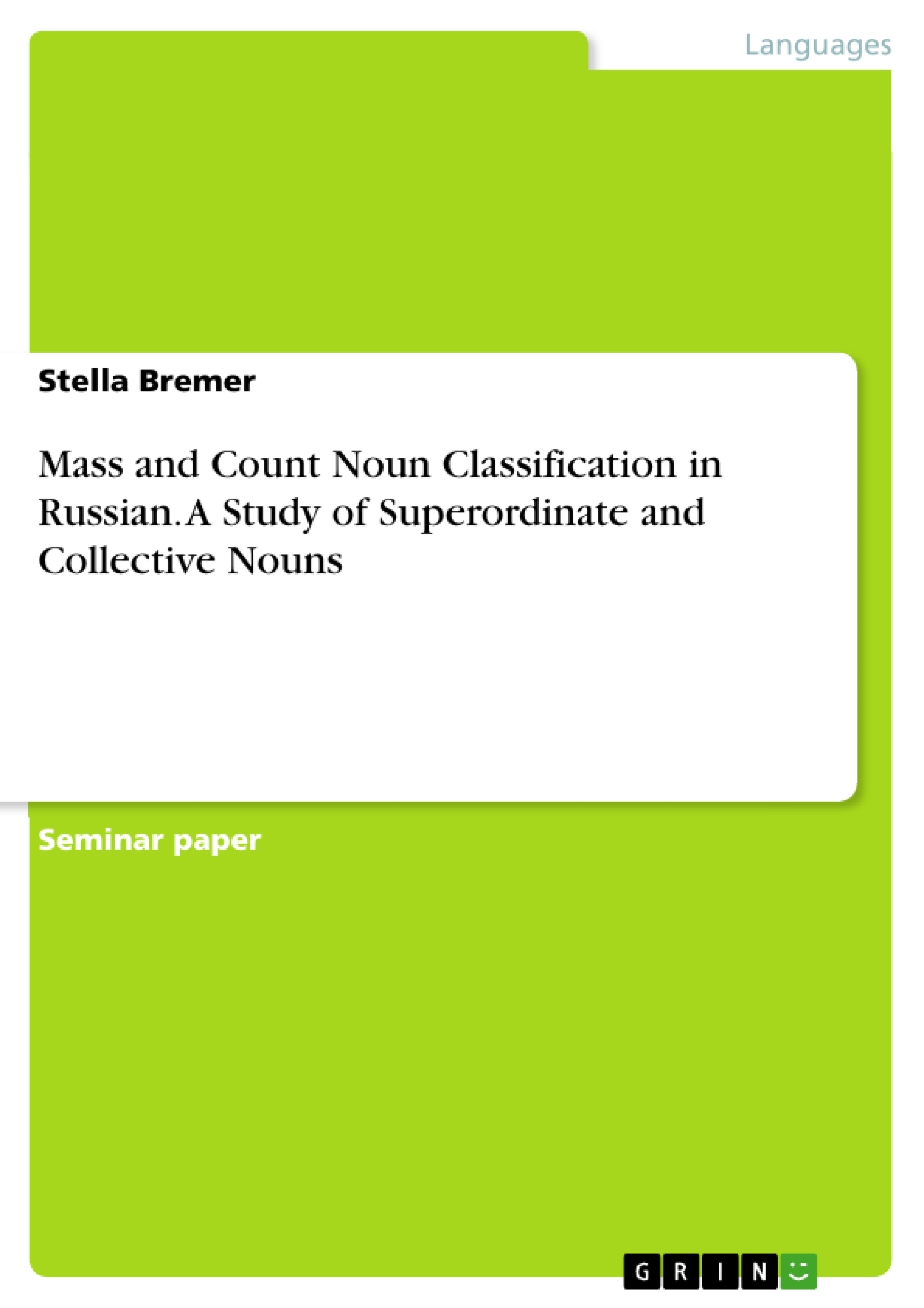Mass and count nouns show a clear difference in their properties and morphosyntactic behavior. However, there are still nouns that behave slightly differently, making it difficult to assign them to the group of mass or alternatively count nouns. Such nouns are superordinate nouns like 'furniture' and 'footwear'. Taking a look at the group of collective nouns in Russian, this paper applies the issue of mass and count properties as well as nouns being difficult to classify to this group. The analysis shows that within the group of Russian collective nouns, there is also a difference in the behavior of some nouns. These nouns are then categorized into the tentative subgroups 'countable collective nouns' and 'superordinate collective nouns' and the paper proposes a possible explanation for their behavior.
Table of Contents
- Introduction
- The mass/count distinction
- Collective nouns in Russian
- Analysis
- Conclusion
Objectives and Key Themes
This paper aims to analyze the behavior of collective nouns in Russian in relation to the mass/count distinction, particularly focusing on the similarities and differences they share with English superordinate nouns. The paper explores the group of collective nouns in Russian, examining which qualities typically assigned to mass or count nouns they exhibit. It also aims to determine to what extent they resemble mass nouns, count nouns, or superordinate nouns.
- The mass/count distinction in linguistics, particularly as it pertains to Indo-European languages.
- The properties of mass nouns, including cumulativity and divisiveness.
- The morphosyntactic behavior of mass and count nouns, including their ability to combine with numerals, form plural forms, and combine with determiners.
- The characteristics of collective nouns in Russian and their comparison to similar groups in English.
- The classification of collective nouns in Russian, particularly the categories of 'countable collective nouns' and 'superordinate collective nouns'.
Chapter Summaries
- Introduction: This chapter provides an overview of the mass/count distinction in linguistics, highlighting its relevance to the study of Russian collective nouns. It introduces the focus of the paper, which is to examine the behavior of these nouns and their relationship to mass and count nouns.
- The mass/count distinction: This chapter delves into the theoretical framework of the mass/count distinction, discussing the properties of mass nouns and how they differ from count nouns. Key concepts like cumulativity, divisiveness, and morphosyntactic behavior are explored.
- Collective nouns in Russian: This chapter introduces the category of collective nouns in Russian, highlighting their unique characteristics and comparing them to similar groups in English. The chapter sets the stage for the analysis of how these nouns function in Russian.
Keywords
This paper focuses on the mass/count distinction, collective nouns in Russian, morphosyntactic properties, cumulativity, divisiveness, superordinate nouns, and the comparison of linguistic categories across languages.
- Citar trabajo
- Stella Bremer (Autor), 2018, Mass and Count Noun Classification in Russian. A Study of Superordinate and Collective Nouns, Múnich, GRIN Verlag, https://www.grin.com/document/1440840



